The infinite wonders of the North York Moors National Park
A world full of endless stretches of heather, green pastures humming with nature, horses and hounds, grouse and trout. Adrian Dangar explores.


Sitting like a dollop of jam atop a giant scone, the 108,000 acres of heather that comprise the North York Moors lie at the heart of the larger North York Moors National Park, which is bounded to the south and west by the fertile farming vales of Pickering and Mowbray, the North Sea to the east and Teesside to the north.
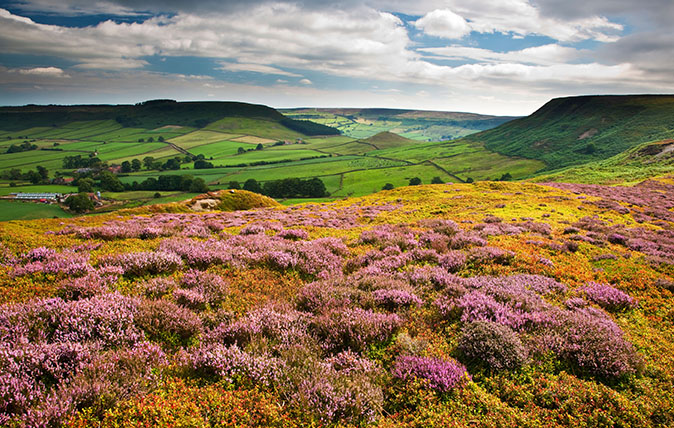
Within these parameters, myriad hidden green dales gouge into the moorland’s heathery high plateau. Their pastures hum with bleating lambs and gleam fresh as paint in spring; in winter, the fields can lie buried beneath snow so deep that peeking wall tops offer the only clue as to their boundaries.
Not to be confused with the Pennines’ better-known Yorkshire Dales, the peat-stained becks draining narrow valleys such as Bransdale, Farndale and Rosedale tumble south into the River Rye on its way to the Roman city of York.
Those flowing through the northern dales of Danby, Glaisdale and Fryup join the River Esk, whose journey to the sea at Whitby is mirrored by steam trains chugging along the North York Moors Railway.

The fishing port of Whitby is overlooked by the sombre ruins of the Abbey and a graveyard that featured in Dracula, but the town is equally well known for fish and chips, kippers from Fortune’s 1872 smokehouse and rich, black jet formed by the fossilised remains of monkey-puzzle trees.
Several miles inland from Whitby lies Goathland, a once sleepy village invigorated by the success of the TV drama Heartbeat, which was shot on location in the area. Even with film crews, the landscape on this bleaker side of the moors feels different, more remote and distinctly less fashionable than the genteel market towns of Helmsley, Kirkby-moorside and Pickering, spaced evenly along the southern and more accessible fringe.
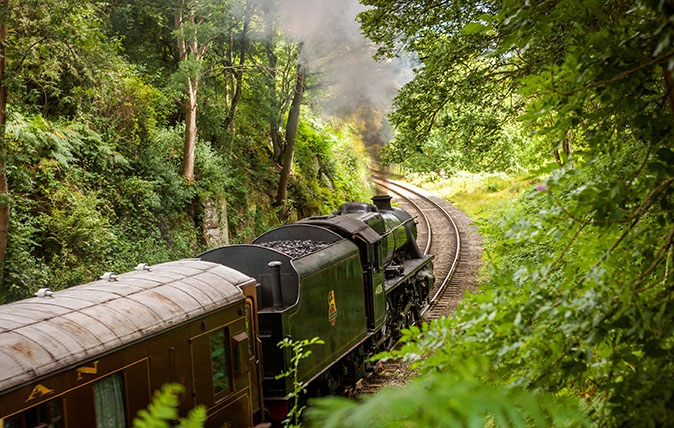
The heather above these settlements morphs into grassland, before arable farming takes over at a lower altitude. Elsewhere, the edges of England’s largest expanse of continuous heather moorland are marked by a plunging escarpment familiar to anyone who’s crawled up the steep and twisty road to the top of Sutton Bank.
Exquisite houses, the beauty of Nature, and how to get the most from your life, straight to your inbox.
Most travellers circumnavigate the moors by linking up with the A1, but it’s just as quick and infinitely more rewarding to head north through glorious and protracted Bilsdale, where green pastures splice the western moors in half.
The route passes close to the ruins of Rievaulx Abbey, one of the great Cistercian monasteries of northern England from the time of its foundation, in 1132, up until Henry VIII’s Dissolution of the monasteries in 1538. Close by, the remains of once magnificent Byland Abbey and Rosedale Priory bear witness to the same grisly fate.
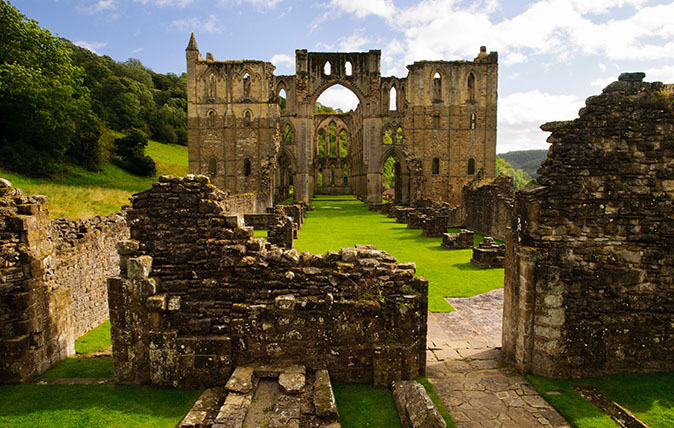
To follow the tiny River Seph north from Rievaulx is to pass the site of the 108-year-old Bilsdale Show, where, on the last Saturday in August, £5 gains entry into a timeless world of farm stock, horses, hounds, home produce, fur and feather – cavies, rabbits, pigeons and fowl. It matters not in the least that the same competitors will run up against each other at a host of similar tiny shows, staged throughout the summer all over the North York Moors.
Visitors may repair to the nearby Sun Inn afterwards, although regulars refer to the hostelry – which is refreshingly devoid of gastropub accoutrements and illuminated by florescent strip lighting – simply as Spout House.
'The moors are perhaps not quite as isolated as they seem'
If fine dining is your thing, head for the Michelin-starred The Black Swan, which nestles beneath the escarpment at Oldstead and serves the best and freshest local produce.
Soon after passing through the village of Chop Gate (pronounced Chop Yat), the feeling of intimacy is suddenly dispelled by far-reaching views to Teesside, serving as a brutal reminder that the moors are perhaps not quite as isolated as they seem.
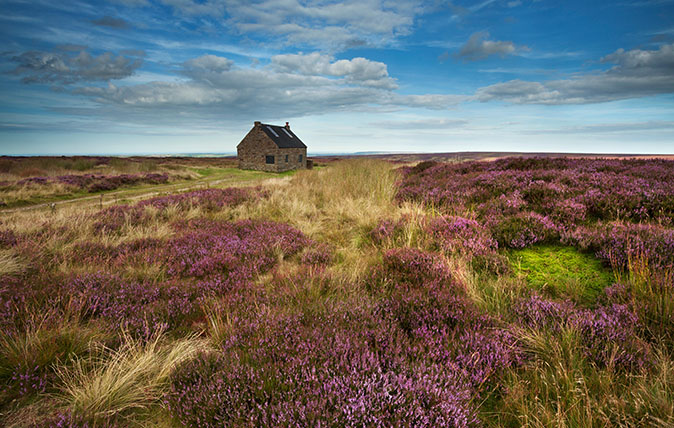
With this kind of topography, it’s hardly surprising that the woodlands clinging precariously to plunging escarpments and steep dale sides are home to some of the finest high-bird pheasant shoots in the land, but sportsmen also travel from all over the world to outwit grouse from August onwards.
Unlike their Pennine cousins, which are smaller and perhaps a fraction faster on the wing, North York Moors grouse were traditionally the preserve of a few landowning families, but their value and popularity has brought employment to the region – there are twice as many moorland gamekeepers here now than there were 20 years ago.
As well as bringing prosperity, this has led to a carefully conserved habitat, which benefits a wider range of wildlife and safeguards the dazzling purple-heather vistas that tourists flock to enjoy each summer.
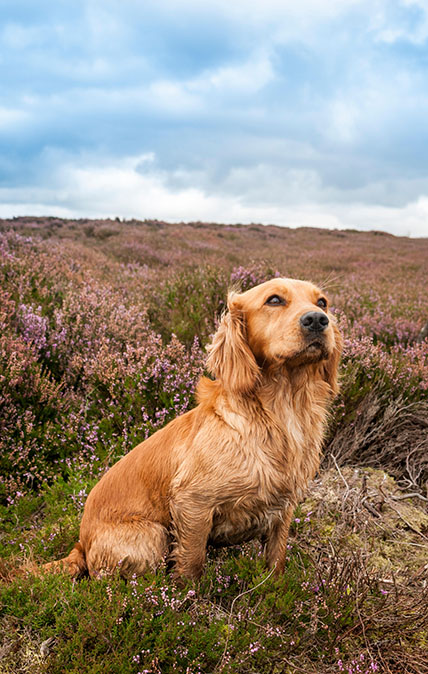
Grouse-shooting and hunting are uneasy bedfellows, but the southern dales have been hunted continuously by hounds since the late 17th century, when the 2nd Duke of Buckingham galloped across land now registered to the Bilsdale and Sinnington hunts. The statesman, soldier and poet died at Kirkbymoorside in April 1687, from a chill caught when hunting in Bilsdale.
Here, the eponymous hunt endures to this day, together with the Sinnington and the Goathland and Glaisdale, although shooting pressures lamentably brought about the demise of the Farndale in 2015. That dale, however, still rings to the cry of hounds in winter as the Ampleforth Beagles show fine sport among the hills.
The numerous becks and rivers draining the moors have never enjoyed such an exalted reputation as the limestone streams of the Dales, yet their peaty waters are teeming with hungry, exquisitely marked wild brown trout that provide wonderful sport for the fly-fisherman.
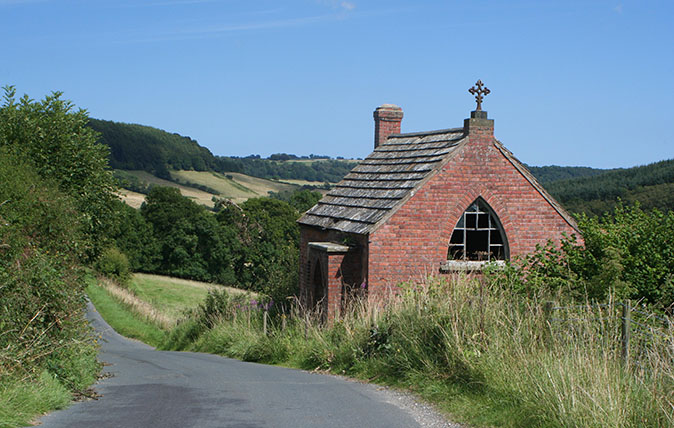
There’s nowhere better than the aptly named Troutsdale, where the infant River Derwent enjoys a classic mayfly hatch, or the River Esk further north, a true spate river where the angler fortunate enough to arrive when the river is flowing at an all-too-brief perfect height and colour can enjoy prolific catches of sea trout and salmon.
I am, perhaps, biased towards the North York Moors and surrounding landscape; I caught my first trout (and more than a few eels) in the River Esk, hunted her southern slopes for 11 seasons as master and huntsman to the Sinnington and shot my first grouse – on August 12, no less – many moons ago, under a peerless blue sky. I’ve witnessed plenty of changes since, but the magnificent landscape endures and it always will.
For more information, visit www.north yorkmoors.org.uk and www.yorkshire.com.
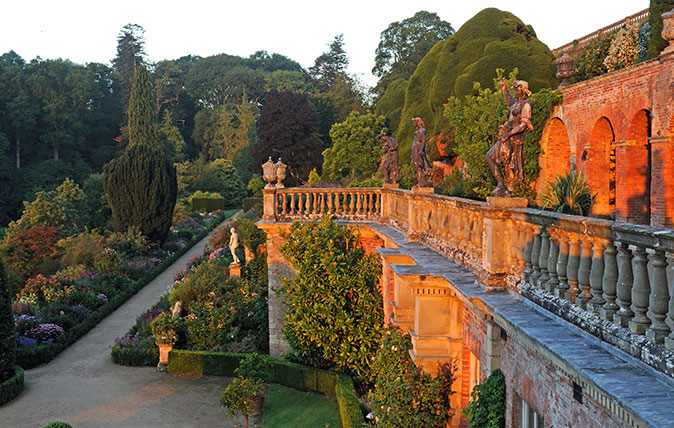
Powis Castle: An exemplary, inspirational and uplifting garden full fit for the 21st century
Non Morris visits Powis Castle in Welshpool, a plantsman’s paradise that reveals more and more as you traverse its many

The North York Moors: Alive with adventure, from enchanting forests to castles, beaches and gardens
Whether you go in search of adventure, family fun or a quiet break, you will leave this hospitable land of

Alfa Romeo Giulia Super review: An Italian masterpiece
Our motoring expert Charles Rangeley-Wilson will never look back after test driving this incredible car.
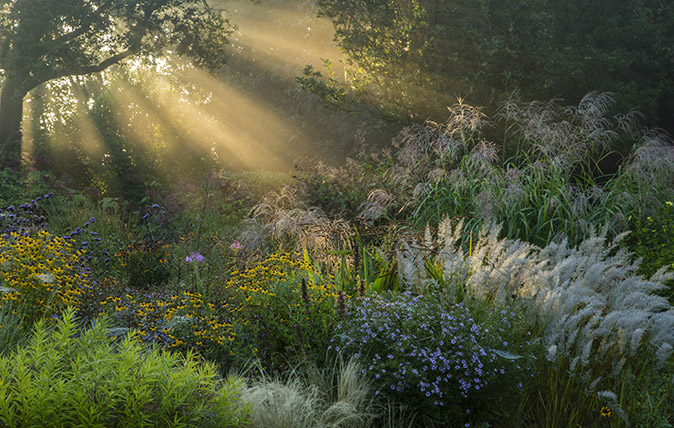
12 breathtaking images to inspire you to enter the International Garden Photographer of the Year
Country Life is unlike any other magazine: the only glossy weekly on the newsstand and the only magazine that has been guest-edited by His Majesty The King not once, but twice. It is a celebration of modern rural life and all its diverse joys and pleasures — that was first published in Queen Victoria's Diamond Jubilee year. Our eclectic mixture of witty and informative content — from the most up-to-date property news and commentary and a coveted glimpse inside some of the UK's best houses and gardens, to gardening, the arts and interior design, written by experts in their field — still cannot be found in print or online, anywhere else.
